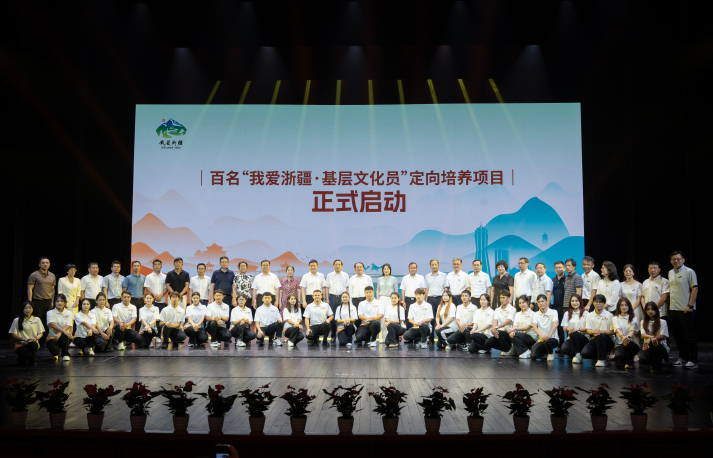| Xinjiang Today |
| Higher education flourishes in south Xinjiang | |
|
|
 The Xinjiang Hetian College campus in Hetian County, Hetian Prefecture (XINJIANG HETIAN COLLEGE WEBSITE)
Historically, its southern part was the most underdeveloped part of Xinjiang where higher education was concerned. When Xinjiang Uygur Autonomous Region was established in 1955, there were only two universities in the south: Tarim University in Alaer (Aral) and Kashi University in Kashi (Kashgar). Higher education resources were both limited and scattered.
That began to change in 2012, when the local authorities, strongly supported by the Central Government, prioritized expanding access to higher education. The goal is not only to improve educational equity but also to promote social stability and economic growth. The subsequent investment has been substantial. In both 2023 and 2024, Xinjiang's public education budget surpassed 100 billion yuan ($14 billion), one of the fastest increases nationwide. In 2024 alone, around 2.8 billion yuan ($389.8 million) was allocated to build new tertiary campuses and renovate existing universities in south Xinjiang. The same year, south Xinjiang saw the addition of two higher learning institutions: the Xinjiang Hetian College in Hetian (Hotan) Prefecture and a campus of the Xinjiang Tianshan Vocational and Technical University in Kizilsu Kirgiz Autonomous Prefecture. With the establishment of these two schools, all five prefectures in south Xinjiang have their own institutions for undergraduate studies.  A job fair for college graduates is held in Urumqi on May 7 (VCG)
Pairing for progress From the edge of the Tarim Basin to the foot of the Pamir Plateau, modern university campuses have sprung up across Xinjiang, opening new pathways to higher education for local students. The region is also stepping up efforts to refine science and engineering higher education, with an emphasis on aligning academic programs with the specific needs of local industries. Additionally, initiatives conducted under the pairing-up assistance policy are supporting Xinjiang to optimize the distribution of higher educational resources, strengthen faculty training and build stronger programs in natural sciences. Under China's pairing-up assistance policy, multiple provincial-level regions, central government agencies and centrally administered state-owned enterprises have been designated to assist specific areas of Xinjiang since 1997. With support from the Ministry of Education and the local authorities of Xinjiang, more than 30 universities across China are now paired with the Xinjiang Hetian College to strengthen its undergraduate programs. Under this national support network, the college has reformed its teaching methods and administration practices, building a modern institutional framework and refining its discipline structures. In 2024, it enrolled its first 1,000 undergraduates; this year, the target is to admit 2,700 undergraduates and increase the number of bachelor's degree courses to 13 from six. The fledgling school aims to provide hands-on education by forging sustainable partnerships with various industries.  The launch of a training program for Xinjiang Institute of Technology performing arts students at the Zhejiang Vocational Academy of Art in Hangzhou, Zhejiang Province, in September 2024 (CNSPHOTO)
Shifting focus At the Kizilsu campus of the Xinjiang Tianshan Vocational and Technical University, strong disciplines are being created, closely aligned with both national strategies and local priorities, such as new energy, new materials, advanced manufacturing and emerging industries. The school plans to launch at least 40 bachelor's degree programs, with a focus on fields like energy and materials, equipment manufacturing, environmental resources, information technology and healthcare. By 2030, it aims to establish a well-balanced academic system with engineering at its core, complemented by administration and other disciplines. Aligning academia with industries reflects a broader shift in the region. The local authorities are steering academic institutions to support regional economic strategies. This involves breaking down the existing barriers between disciplines and fostering talents in key fields such as science, engineering, agriculture and medicine. On June 1, Zhang Ting, who has completed her Ph.D. studies in integrative biosystematics overseas, joined Kashi University through its high-level talent recruitment program. Her arrival comes as the university, having gained approval to issue doctoral degrees in 2024, has stepped up its efforts to strengthen research and teaching capacity. As part of a newly launched three-year plan, it will invest 50 million yuan ($6.9 million) annually to attract top-tier teachers in emerging fields across engineering, medicine and other scientific disciplines. This is part of a wider trend in south Xinjiang, with several higher learning institutions already entering a new phase of development—one that focuses more on improving the quality of their academic programs. In 2024, the Xinjiang College of Science and Technology in Bayingolin Mongolian Autonomous Prefecture introduced six new undergraduate programs in areas such as AI, the digital economy and healthcare management—sectors that struggle with acute staff shortage but are essential to the region's sustainable development. Also in 2024, the Xinjiang Institute of Technology in Aksu Prefecture, which was upgraded from a school of Xinjiang University to an undergraduate institute directly under the regional education authorities in 2019, passed the national undergraduate teaching quality assessment—a feat that marks a major shift of the school's focus from scale to quality. The institute's rapid evolution is a testament to not only the growing role of education in the region's overall development, but also a broader transformation across south Xinjiang: From being an area that used to send its students elsewhere to study, it is emerging as an educational hub in its own right. At the heart of this shift is the recognition that the foundation of lasting stability and prosperity in Xinjiang lies in its people—and ultimately, in education. At this new historical juncture, higher education in south Xinjiang is moving away from mere expansion in scale to focus on educational quality. Universities across the region are pursuing higher-quality growth by fine-tuning their course offerings, boosting the strength of their faculty, and enhancing their ability to cope with local industrial trends. Guided by the new national strategy, higher education in south Xinjiang is poised to flourish. Its institutions are set to cultivate a new generation of capable and committed individuals who will help shape the region into a new frontier for China's modernization. The author is a reporter with the Xinjiang Daily newspaper Comments to pengjiawei@cicgamericas.com |
|
||||||||||||||||||||||||||||
|